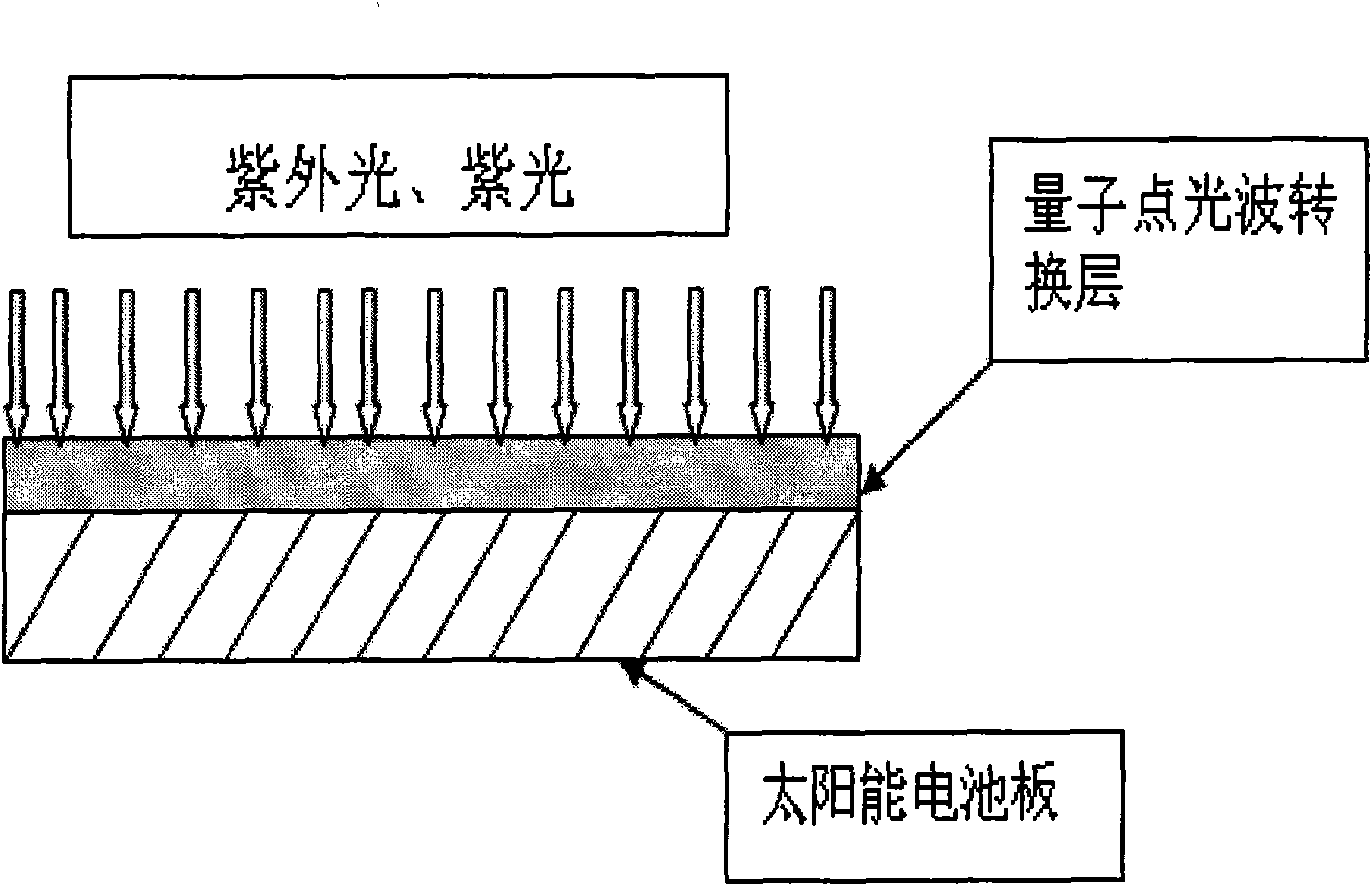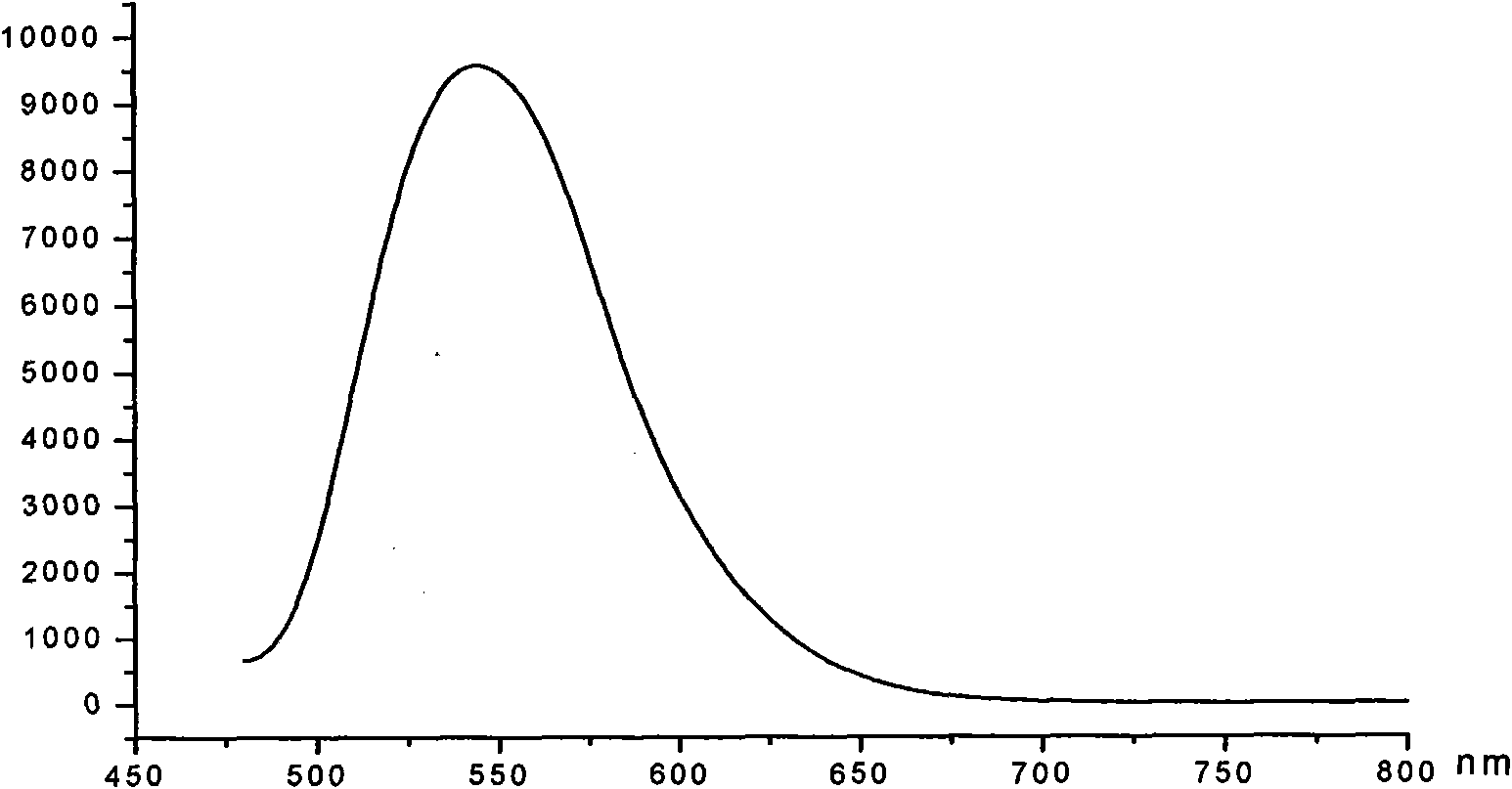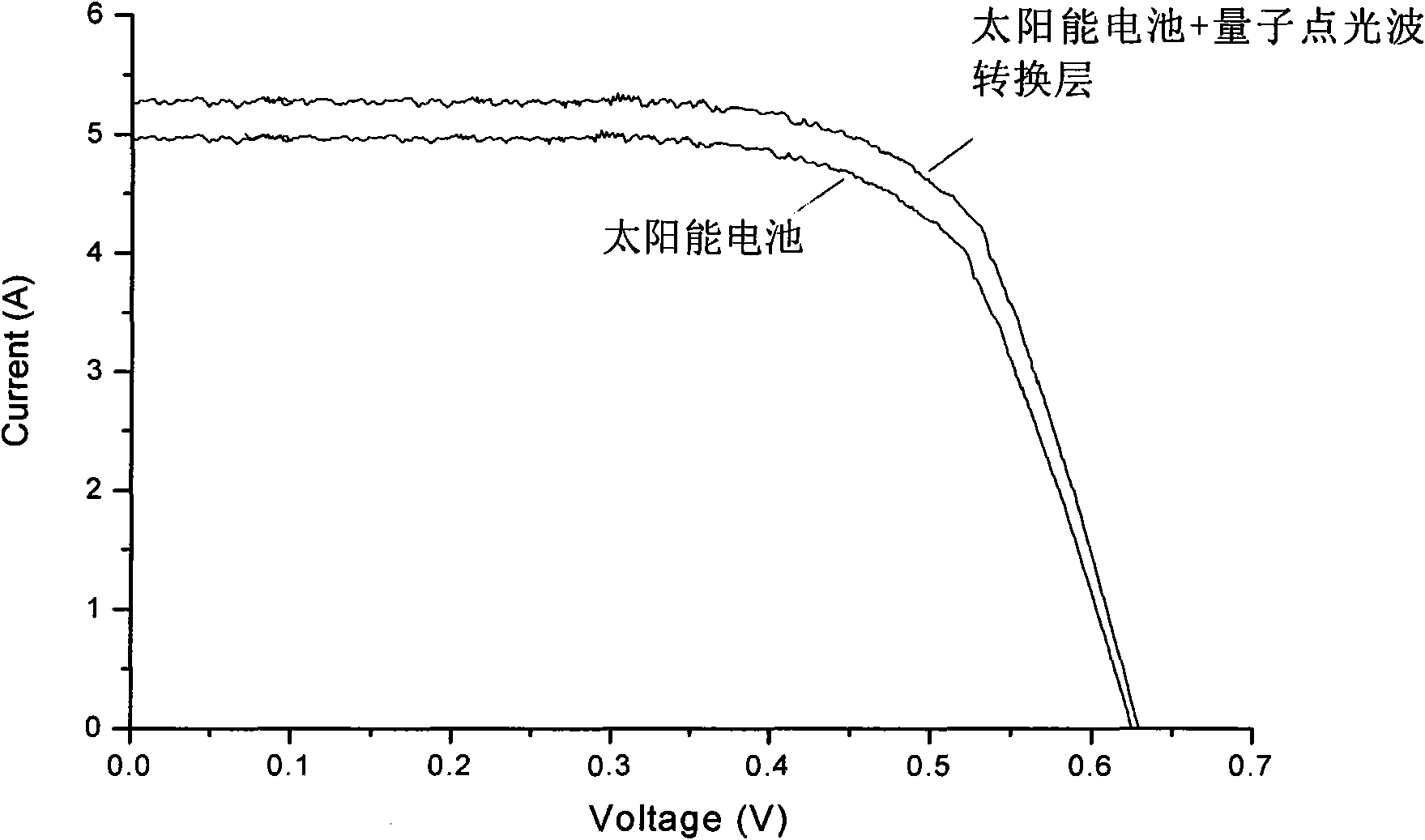Method for preparing quantum dot light-wave conversion layer on the surface of silica-based solar cell
A solar cell, light wave conversion technology, applied in coatings, circuits, electrical components, etc., can solve the problems of solar energy loss, low quantum efficiency, etc., to improve photoelectric conversion efficiency, high photoelectric conversion rate, and photoelectric conversion rate. Effect
- Summary
- Abstract
- Description
- Claims
- Application Information
AI Technical Summary
Problems solved by technology
Method used
Image
Examples
Embodiment 1
[0034] The CdS quantum dot material is mixed into the silica sol to prepare the quantum dot light-wave conversion composite material, and then coated on the surface of the silicon-based solar cell to form a quantum dot light-wave conversion layer. The preparation includes the following steps:
[0035] a. Preparation of silica sol
[0036] Take 10mL of tetraethyl orthosilicate with a concentration of 1.27mol / L, 25mL of absolute ethanol, 0.25ml of 2mol / L hydrochloric acid and 8mL of deionized water and mix them, and then use the hot solvent method to magnetically store the mixed solution in a water bath at 50°C. Stir for 3 hours to obtain a sol solution of silicon dioxide.
[0037] b. Preparation of CdS quantum dot nanomaterials
[0038] Get 3.2mmol / L cadmium chloride (CdCl2 2.5H2O) solution 25ml and quality are 5% polyvinylpyrrolidone solution (PVP) 10ml at room temperature and stir 2 hours, then 3.2mmol / L sodium sulfide (Na2S . 9H2O) solution 15ml was added dropwise in the a...
Embodiment 2
[0046] The CdTe quantum dot material is mixed into the silica sol to prepare the quantum dot light-wave conversion composite material, and then coated on the surface of the silicon-based solar cell to form a quantum dot light-wave conversion layer. The preparation includes the following steps:
[0047] a. Preparation of silica sol
[0048] Take 10mL of tetraethyl orthosilicate with a concentration of 1.27mol / L, 25mL of absolute ethanol, 0.25ml of 2mol / L hydrochloric acid and 8mL of deionized water and mix them, and then use the hot solvent method to magnetically store the mixed solution in a water bath at 50°C. Stir for 3 hours to obtain a sol solution of silicon dioxide.
[0049] b. Preparation of CdTe quantum dot nanomaterials
[0050] Put 0.005mol Te powder in a beaker, add 10ml (2.2×10-1mol / L) sodium borohydride (NaBH4) aqueous solution, let it stand for a few minutes until the black Te powder gradually dissolves, forming a colorless and transparent NaHTe aqueous solution...
PUM
| Property | Measurement | Unit |
|---|---|---|
| wavelength | aaaaa | aaaaa |
| viscosity | aaaaa | aaaaa |
| thickness | aaaaa | aaaaa |
Abstract
Description
Claims
Application Information
 Login to View More
Login to View More - R&D
- Intellectual Property
- Life Sciences
- Materials
- Tech Scout
- Unparalleled Data Quality
- Higher Quality Content
- 60% Fewer Hallucinations
Browse by: Latest US Patents, China's latest patents, Technical Efficacy Thesaurus, Application Domain, Technology Topic, Popular Technical Reports.
© 2025 PatSnap. All rights reserved.Legal|Privacy policy|Modern Slavery Act Transparency Statement|Sitemap|About US| Contact US: help@patsnap.com



